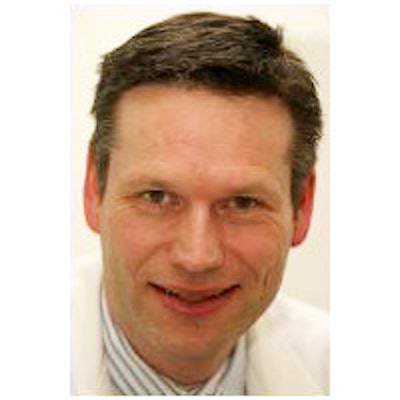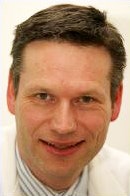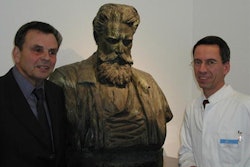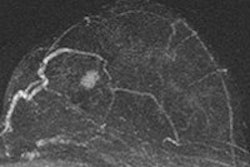
Lots of players, lots of different procedures, a highly complex medical subject, and a matter that the public regards as sensitive: whichever way you look at it, breast diagnostics is a subject that is keenly debated.
 Does Germany need its own lexicon? Not in the short term, but we need to put feelers out, according to Dr. Markus Müller-Schimpfle.
Does Germany need its own lexicon? Not in the short term, but we need to put feelers out, according to Dr. Markus Müller-Schimpfle."I just think back to what Swiss colleagues had to say about mammography screening," said Dr. Markus Müller-Schimpfle, the new chair of the Breast Imaging Working Group (WOBI) of the German Radiological Society (DRG). "Amongst the various specialties and sectors, both in German-speaking countries and further afield, completely individual approaches and ways of looking at the subject appear to be the norm and the debate often becomes live, with the result that patients and women who are candidates for screening become confused and, in the worst-case scenario, refuse breast diagnostics and early detection completely, chucking the baby out with the bath water."
In his view, the establishment of WOBI could come to the rescue here.
"What would be good would be if this could start up as an email group, providing a speedy and informal forum in which people can exchange views on current issues," he said, adding that what really matters is that experts should not be debating these specialist issues in the broad public domain, but where they need to be debated: within the scientific community.
As Müller-Schimpfle sees it, the purpose of a truly functional working group is to strengthen standardization and use the language of consensus to help in improving safety for service users and, in doing so, encouraging wider acceptance of breast diagnostics.
Reliability and willingness to learn: Consensus meetings
The mindset within the working group is akin to that which is present at the biennial consensus meetings set up by Müller-Schimpfle, who is head of radiology, neuroradiology, and nuclear medicine at the Frankfurt-Höchst Clinic, and a partner in 'Radiomedicum,' a regional group practice for radiology and nuclear medicine.
"The idea behind these meetings is to provide a forum within which great minds can debate issues that are just coming onto the agenda, but that are not yet backed up by an adequate database. Together, we want to find a sound majority view on such issues that is as reliable as it can be," he noted.
In Müller-Schimpfle's opinion, the importance of an intensive exchange of views on breast diagnostics becomes highly topical when one looks at the issue of the procedures used for high-risk female patients.
"In 2011, we were still saying that x-ray mammography and ultrasound scanning were the cornerstone for this group of patients and that MRI was an optional extra. In 2013, the outcome from our discussion was that we then regarded MRI as the primary approach for high-risk patients, with the other two kept as optional extras," he said.
He sees WOBI as the successor to detailed consensus meetings, making them into a formal institution. Also, Müller-Schimpfle wants to launch a debate on BI-RADS, the classification lexicon used by the American College of Radiology (ACR).
"From an American point of view, we have a standard imposed that only provides a certain depth of detailed imaging. Many questions remain unanswered and the medical case for taking an alternative view of many such issues is every bit as strong," he explained.
As an example, he cites the problem of breast density. In 2003, BI-RADS laid down percentage density data for glandular tissue. In the same year, the working group in Tübingen, with which he was working at the time, established that it made greater sense to take into account the cluster size as well, which could possibly be overlooked. This would also be easier to reproduce, he said.
BI-RADS now recommends that assessment should also be based upon tumor size for parenchyma in classes A-D, which could possibly have been overlooked, but it is not particularly clear in specifying this. BI-RADS is a good starting point, but it's crucial to avoid adopting every recommendation that comes out of the U.S.; science in German-speaking countries is just as good at ensuring medical comparability, according to Müller-Schimpfle.
So, does this mean that Germany needs its own lexicon? "Not in the short-term," he asserts. "But we do need to put feelers out within our German-speaking community."
In view of the rigid copyright regulations that also hamper scientific freedom, Müller-Schimpfle is keen to talk to the ACR. "We must not let ourselves become shackled where this matter is concerned," he said, adding that obviously scientific transferability of the standards that apply to findings and, hence, the comparability of those standards will, however, also need to be guaranteed.
Radiology and care in the community
Müller-Schimpfle, who has also been involved in occupational and professional policy for many years, is currently caught up in a debate surrounding specialist medical care in the community (ASV - ambulante spezialärztliche Versorgung). This new cooperation model that covers a number of different sectors is currently taking shape within the German Federal Joint Committee (Gemeinsamer Bundesausschuss) in connection with a number of individual patterns of illness. Along with other DRG representatives, he believes the main problem lies in the lowering of the status of radiologists to that of diagnostics contractors.
"Ours is just a discipline that people can call in. We cannot form teams and we are not part of the follow-up process," he said.
The most problematic issue of all, as he sees it, is the way in which patients with advanced gastrointestinal tumors are treated under specialist medical care in the community, for whom round-the-clock access to a radiologist is not part of the plan. That criterion could possibly end up knocking the entire project on the head, he asserts.
He also sees glaring deficiencies in community-based specialist medical care where it touches upon his own specialty because, under plans currently being discussed for forming teams to manage breast cancer patients, radiology would also be an "as required" specialty, even though radiologists operate as primary contacts during screening. In discussions with the Federal Joint Committee, Müller-Schimpfle, along with other DRG colleagues, has made the point very clearly.
"We must write a definition into the plans for radiologists to be part of specialist medical care in the community, under which we can appear both as an 'as required' specialty, in the sense of general radiological input, and as specialists in the core team when specialist services need to be provided, this being need-based wherever possible. After all, the radiologist has a dual role, as a general and a specialist service-provider," he explained.
This and other topics look certain to be discussed at the Breast Diagnostics Consensus Meetings: New standards for findings, to be held in Frankfurt on 13 June 2015.
Editor's note: This article is an edited version of a translation of an article published in German online by the German Radiological Society (DRG,Deutsche Röntgengesellschaft e.V.). Translation by Syntacta Translation & Interpreting.



















